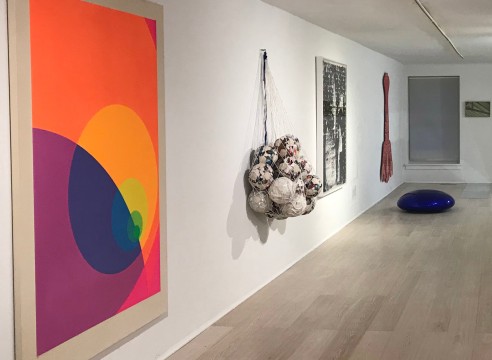
Born in Port Arthur, Texas, Rauschenberg studied at a variety of art schools including the experimental Black Mountain College outside of Asheville, North Carolina, where the artist and former Bauhaus instructor Josef Albers was his teacher. There, his mentors and collaborators included the composer John Cage, the artist Cy Twombly, and the choreographer Merce Cunningham, with whom he would collaborate on more than twenty dance compositions. Rauschenberg’s engagement with performance was enduring and a defining influence in his work.
In his landmark series of Combines (1954–64) he mixed the materials of artmaking with ordinary things, writing, “I consider the text of a newspaper, the detail of photograph, the stitch in a baseball, and the filament in a light bulb as fundamental to the painting as brush stroke or enamel drip of paint.” In Bed (1955), for example, he covered a large wall-mounted board with a pillow and patchwork quilt which he then marked with graphite scrawls and exuberant lashings of paint, the latter perhaps an ironic nod to Abstract Expressionism.
Photography and printmaking were two of Rauschenberg’s abiding interests. In the 1958–60 series based on the thirty-four Cantos of Dante’s Inferno, he used a solvent to transfer photographs from contemporary magazines and newspapers onto drawing paper. The series is emblematic of a lifetime of experimentation with the ways the deluge of images in modern media culture could be transmitted and transformed.
Robert Rauschenberg was awarded the National Medal of Arts in 1993.[3] He became the recipient of the Leonardo da Vinci World Award of Arts in 1995 in recognition of his more than 40 years of fruitful artmaking. Rauschenberg lived and worked in New York City as well as on Captiva Island, Florida until his death from heart failure on May 12, 2008.